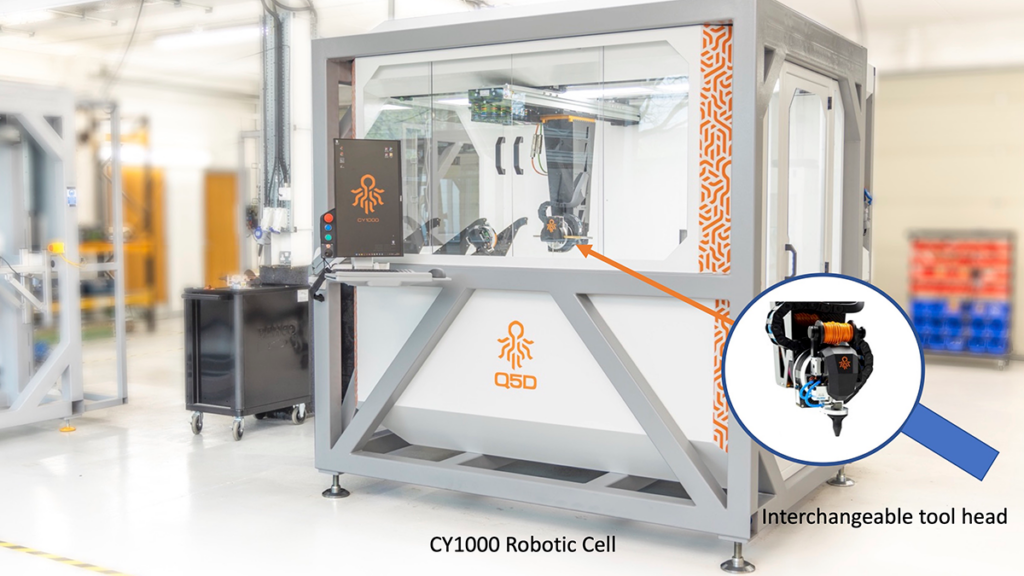Q5D, a manufacturer of wire harness automation equipment for additive manufacturing, has launched its first product, the CY1000.
The 5-axis CNC additive manufacturing robotic cell solves the most challenging automation issue: how to automate the addition of electrical connections in increasingly complex products.
Traditional wiring harnesses are heavy, space-hungry, and costly. By contrast, the CY1000 automatically, economically, and securely adds components, connections, and conductors into products or components made of metal, ceramic, or polymer. The company calls its unique process ‘Electrical Function Integration’. It eliminates the need for separate, expensive, fault-prone wiring harnesses, minimises design constraints, improves reliability, and cut costs. It can also secure and simplify supply chains by removing dependence upon labour. The self-contained CY1000 manufacturing cell means that wiring can be co-located with the final assembly, eliminating the costly transportation of heavy harnesses.
The CY1000 has a robust, steel-frame gantry and robotic platform. It is designed for stand-alone use, or for easy integration as part of a process line, where it offers full-depth access for robotic loading. Each machine can use a variety of specialised tools to add bare or insulated wire and extrude a wide range of polymers from Nylon to PEEK and Kydex. It can also pick and place electrical connectors and components. With these diverse capabilities, the CY1000 creates 3D shapes, adds components, and connects them to each together with precision integrated wiring.
The flexibility of the CY1000 is central to its capability to transform productivity. Large components or parts (up to 1m in diameter), or multiple smaller parts, can be formed by moulding, stamping, or other traditional methods before being loaded into the manufacturing cell, which locates the part and adds electrical functions as specified by the designer using a CAD/CAM based on Siemens NX, but with a bespoke motion controller, post-processor, simulator, and other tools.
The CY1000’s external dimensions are 2,300mm wide x 2,170mm long x 2,320mm high and its working area is 1,000mm in diameter and 300mm in height. The X and Y axes operate at 1m/s, the Z axis at 0.5m/s, and the head and bed axes move at up to 70 revolutions per minute. The machine is controlled via a touch screen and keyboard. In addition to control functions, the screen provides an overview of the manufacturing platform status and performance, and displays productivity and quality data, if this is available.
The CY1000, which is customised for each application, is supplied with polymer and wiring end effectors. The wiring may be bare or insulated copper, up to 3mm in diameter. Conductive ink end effectors will be available later this year.
Q5D’s CEO, Steven Bennington, commented: “Almost all wiring harnesses in this $200B+ market are made by hand at present. With the demand for wiring driven by electrification, the internet of things, and net zero, automation is the only way to keep pace.”
There’s also plenty of other robotics editorial at IoT Insider’s sister publication, Electronic Specifier. And you can always add to the discussion at our comments section below or on our LinkedIn page here.
